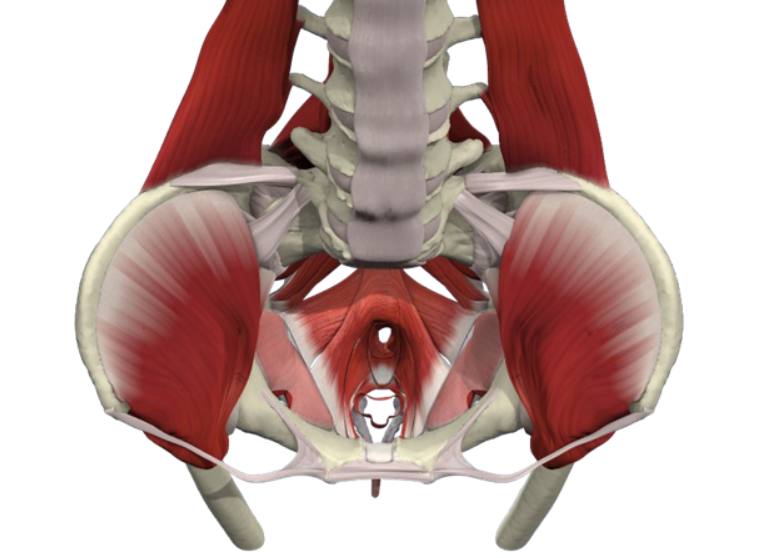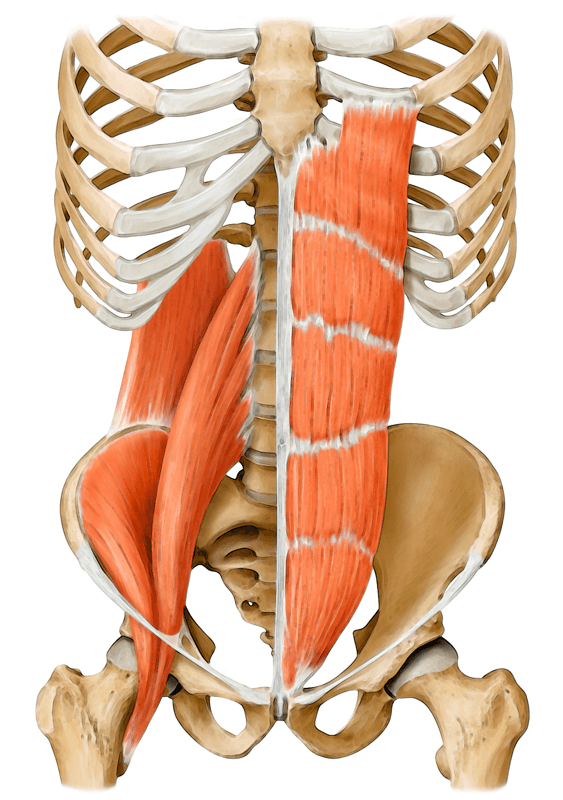Is Your Back Pain Caused By Your Pelvic Floor?
Nov 29, 2017Back pain is such a common complaint that we treat, but what if I told you that back pain can be caused by pelvic floor dysfunction? First, it is important to remember that pain does not equal damage. Second, it is not unusual to experience pain in a different area from where the dysfunction lies. This could be referred from another area or a secondary effect to moving in a weird way due to the dysfunctional area.
Cause and effect in this case is very similar to asking “Which came first, the chicken or the egg?”. What we can state confidently, is that your back and your pelvic floor go hand-in-hand. Studies show that folks with low back pain have decreased pelvic floor function compared to those without back pain. Could this be pelvic floor inhibition due to the back pain? Can weakness or over-tension or control issues of the pelvic floor be causing the back pain?
For many, the pelvic floor is very nebulous. What is it anyway? Where is it? What does it look like? Do only women have them? Males do have pelvic floors, but the anatomy is different. For this post, we will referring specifically to the female pelvic floor. But guys- you too can have pelvic floor dysfunction! This image below is a great look at the female pelvic floor and it’s close relationship to the other pelvic and lumbar spine architecture.

The pelvic floor helps to support the weight of your organs, helps with toileting and sexual function, and influences posture and control through pressure within the core. Weakness, over-tension, spasm or damage to the pelvic floor will change the support of the sacroiliac (SI) joint and the forces that we create through the lumbar spine.
If you have addressed your lumbar spine without much change in symptoms, go a different route! Keep in mind, there are other signs of pelvic floor dysfunction, other than leaking urine or back pain. They include painful sex, frequent constipation, the feeling of heaviness in the vagina with jumping/running/bearing down etc.
Addressing the Pelvic Floor
There are 3 areas to cover that address your pelvic floor in a functional way -- position, breathing and bracing. All of these can be applied to any athlete in any setting.
Position- Keeping the ribcage stacked over the pelvis is an important position to maintain, regardless of activity. This sets the canister (“core”) up for optimal function- meaning the diaphragm, pelvic floor, abs and back muscles can work harmoniously to lift the most weight, support the spine and minimize pressure on the pelvic floor.
Breathing- Diaphragmatic breathing is essential for pelvic floor function and decreasing pain around the low back. The pelvic floor mirrors the movement of the diaphragm, so it is a simple way to relax a tight pelvic floor. Also, two major muscles that run from the ribs to the pelvis also have connections to the diaphragm. So deep breaths can work as a gentle mobilization!

Bracing- How do you prepare for heavy loads or challenging positions? If you simply hold your breath and go, you are missing an opportunity to create more tension! Or if you are holding your breath for a position that should not require that much power, you are increasing the workload on your pelvic floor and back for no reason. For example, preparing to lift a couch versus preparing to lift a pencil.
Put simply, if you are lifting something heavy, holding your breath is fair game. IF you do it correctly. If you experience symptoms- low back pain, leaking, heaviness- then do not hold your breath until you seek help for how to correctly brace. Knock the weight down or the mileage down to a place that you do not have symptoms and work there until your tolerance improves.
If you notice you are holding your breath with lifting a small object, such as your purse, then let’s talk breathing. Breathing out on exertion for a task like this will help the pelvic floor contract reflexively and can keep symptoms at bay. Try it out!
Big picture: Back pain does NOT equal back injury. It is very likely that back pain can be decreased and function improved with addressing the pelvic floor as it work with the low back muscles. Check out these simple ways to check your position, breathing and bracing. Often times, pain is a product of HOW you are moving.
If you take a crack at it yourself but just can’t seem to find improvement, reach out to us at Athletes’ Potential. We work with people like you every day to get them back to high functioning lives without pain and with a better understanding of how to move their body.
Thanks for reading!
Dr. Jackie, PT, DPT
Let us help you figure out to live your best active life today!
Remember, Movement is Medicine!

